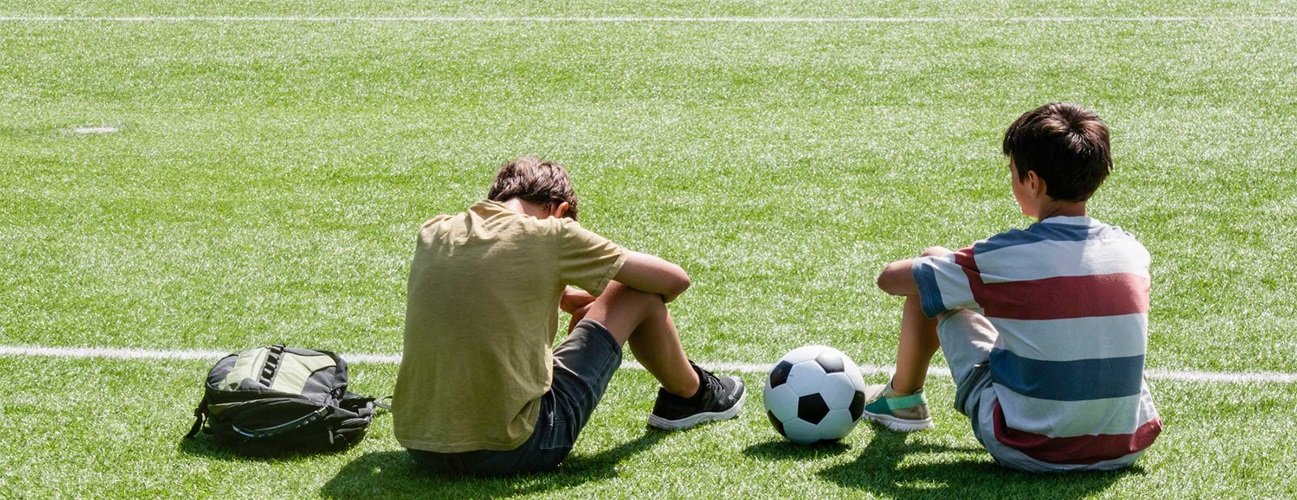Tips for International Student-Athletes
Kjell de Graaf’s Path: From the Netherlands to an American U.S. College Basketball Scholarship
Kjell de Graaf, a young basketball player in Rotterdam, Netherlands, had always dreamed of competing at the collegiate level in the United States. At 6 feet 10 inches tall, he was dedicated to working his way to a scholarship so that it could be his best opportunity to play at a high level while attending school.
“Other than going pro, college hoops is the next highest level at which you can play and still study—and that meant a great deal to me,” de Graaf says. “After a difficult and long road, I was finally able to make my dream come true: a full athletic scholarship to play at the New Jersey Institute of Technology (NJIT).”

At NJIT, de Graaf wasn’t merely playing basketball—he was also acquiring a bachelor’s and a master’s in chemical engineering. Now, he’s pursuing a second graduate degree in materials engineering while carrying out research.
Athletic Scholarships: A Path for International Students
It’s challenging to get a full athletic scholarship, but it’s not impossible. As stated by EducationUSA (a network of advising centers funded by the U.S. Department of State), there are over 1,000 U.S. colleges and universities with opportunities for gifted student-athletes to compete for their teams and contribute to funding their studies.
For students abroad who wish to take a similar route, here are five key steps to obtain an athletic scholarship in the United States:
1. Start Early and Excel in Your Sport
If you want to play sports in the U.S., experts say you should begin preparing at least 18 to 24 months before you plan to enroll. This means:
Training hard to stand out in your sport.
Keeping your grades up in high school—academics matter just as much as athletics.
Taking standardized tests such as the SAT or ACT, and English proficiency tests such as the TOEFL or IELTS.
Kyle Winters, recruiting manager at NCSA College Recruiting (an organization that assists high school athletes in getting recruited), says:
“International student-athletes have a lot to figure out—from eligibility rules to finding the right school. Starting early gives you the best chance.”
2. Understand the Eligibility Process
There are two distinct processes to play sports in college in the U.S.:
Admissions – The standard application process for any student.
Eligibility – Specific requirements by sport organizations to ensure athletes qualify academically and by skill.
Winters, a former high school pitcher who won a full scholarship to the University of New Mexico and went on to play pro baseball, has this to say:
“You have to be both recruited by the team AND accepted to the school to compete in college athletics in the U.S.”
The NCAA (National Collegiate Athletic Association) enforces these eligibility standards. They consider:
SAT or ACT scores
Your GPA in core courses (math, English, science, etc.)
International students need to ensure their high school coursework aligns with these standards. The NCAA Guide for the College-Bound Student Athlete (2023-2024) has it all.
3. Familiarize yourself with the Three Main College Sports Organizations
College sports in the U.S. are regulated by three primary organizations:
NCAA – The largest, with three levels:
Division I (first-level, highest degree of competition, full scholarships)
Division II (smaller institutions, partial/full scholarships)
Division III (no athletic scholarships, but other forms of financial aid available)
NAIA (National Association of Intercollegiate Athletics) – Primarily smaller private universities.
NJCAA (National Junior College Athletic Association) – Two-year colleges.
More than 24,000 international student-athletes compete at NCAA schools, with thousands more in NJCAA and NAIA programs.
Holly Roepke, Grinnell College Athletics Director (a Division III institution), reports:
“If you’re interested in playing in the NCAA, you have to get registered with the NCAA Eligibility Center—whether you’re an international student or not.”
Example: NJIT (a Division I university) has 348 student-athletes, 71 of whom are international players from 30 nations. 63 of them are athletic scholarship recipients, says Lenny Kaplan, NJIT’s Director of Athletics.
4. Network with Coaches
Coaches need to know about you. Here’s how:
Go to sports camps or showcases (events where coaches recruit players).
Send emails with your highlight videos and athletic résumé to coaches.
Research schools diligently—ask scholarships, admission standards, and whether they have other foreign athletes.
Roepke suggests:
“Stand out by demonstrating you’ve done your homework on the school and team. Describe how you would fit in. And always submit your best game footage!”
Coaches award scholarships. Indeed, NCAA Division I and II institutions award more than $3.8 billion worth of athletic scholarships annually to over 195,000 student-athletes.
5. Think About Working with a Recruiting Agency
Although not necessary, a recruiting agency can assist by:
Matching you with coaches.
Helping you navigate through complicated rules.
Allowing you to concentrate on training while they facilitate the recruitment process.
Jon Lowery, University of St. Thomas Head Men’s Soccer Coach, states:
“A good agency can make the process smoother, especially for international students.
South African tennis player Kylie Misdorp utilized NCSA College Recruiting to reach out to coaches. She ultimately received athletic and academic scholarships at Eckerd College in Florida, where she currently pursues biology and psychology.
“The process was confusing, but establishing a connection with the coach made all the difference,” Misdorp says.
Final Advice from Kjell de Graaf
De Graaf’s journey wasn’t easy. Playing for the Netherlands youth national team helped him get noticed, leading to opportunities in Spain and eventually the U.S.
His advice to young athletes?
“Work hard, improve every day, and put yourself out there. With the right mindset, you can make it happen.”

